
One of the most impressive waterfalls in Europe lies in an incredible natural space in Salamanca. It is known as the ‘Spanish Niagara Falls’. When it is in full capacity, it becomes a massive cascade.
The Pozo de los Humos Cascade can be found 90 kilometres away from the city of Salamanca, near the border with Portugal, specifically in Arribes del Duero Natural Park. This place is shared with the neighbouring country and the province of Zamora.
The 50-metre-tall waterfall feeds from the Uces River’s water that heads to the Duero River and sets a limit to the municipalities of Mansueco and Pereña de la Ribera.
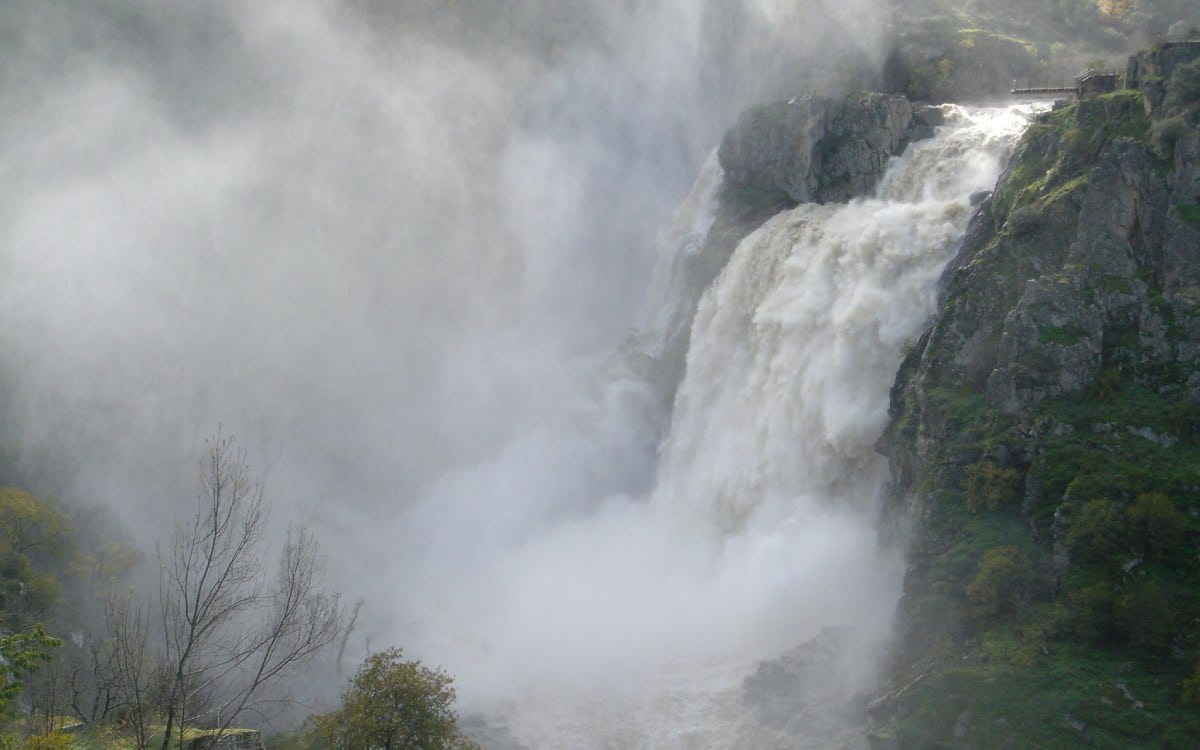
The ‘Spanish Niagara Falls’. | Wikimedia
Uces River’s water disappears into the abyss after jumping over significant, uneven terrain. The fall and the strength of the falling water provoke a unique phenomenon that gives its name to the cascade. When the water falls into the pond, a thick, atomised water curtain or cloud of steam is created. It stays floating and generates a singular atmosphere, some type of fume and haze it is characterised by.
However, this phenomenon can only be observed when the river’s flow is high, which usually happens in periods of intense rain and snowmelt. For this reason, the best time to visit this breathtaking waterfall is in the rainy season that begins in November and ends in May, when the Uces River grows more than ever and the waterfall is at its peak.
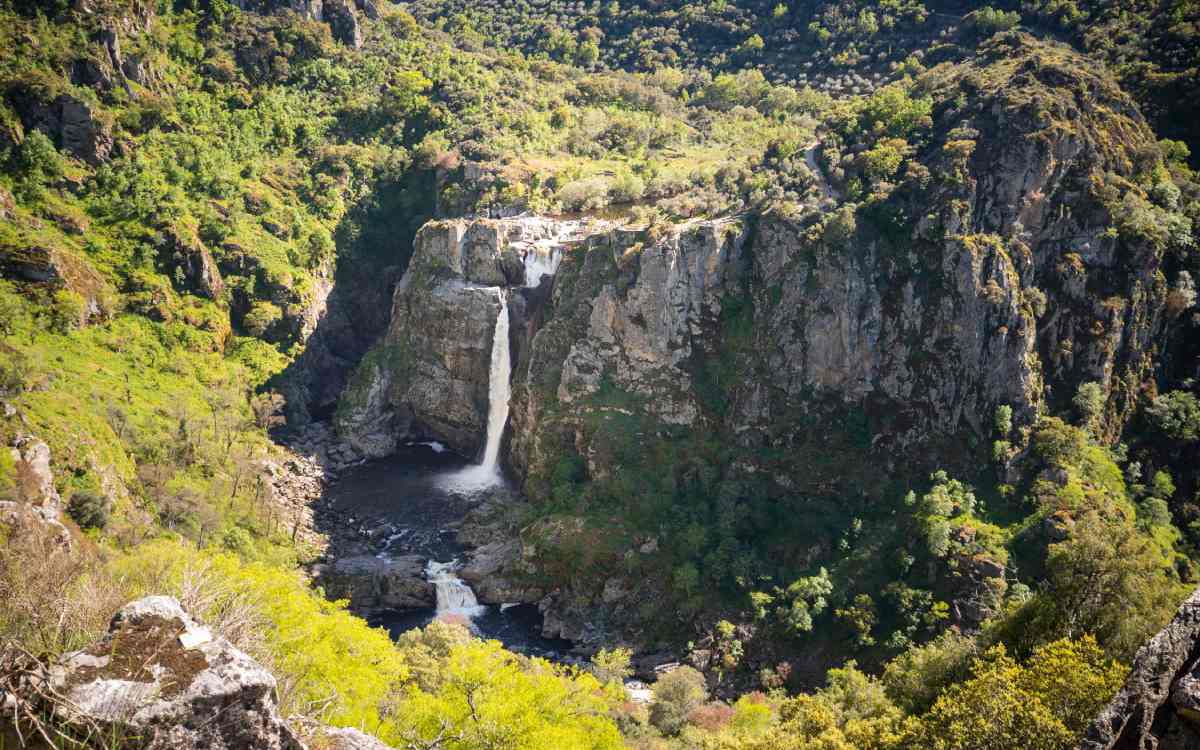
Pozo de los Humos. | Shutterstock
But not only does it have a name with a deep meaning. Actually, there are two waterfalls here. A rock ledge on the highest point splits the river into two flows.
Although Pozo de los Humos is the most important of these waterfalls, Pozo de las Vacas is right by it. This cascade is born from the bifurcation of the Uces River and runs squeezed within two rock walls. The name is said to have its origins in a cow chariot that fell down this cascade and never made it to the mill it was going to.
Visiting this lovely corner offers the possibility of walking through pure nature, thanks to the hiking routes you will find here. And although you should always be careful, they are suitable for all hikers. There are two main routes. If you want to take one of them, you’ll need to go to the villages where they begin and follow the signs that point to the leading path to Pozo de los Humos.
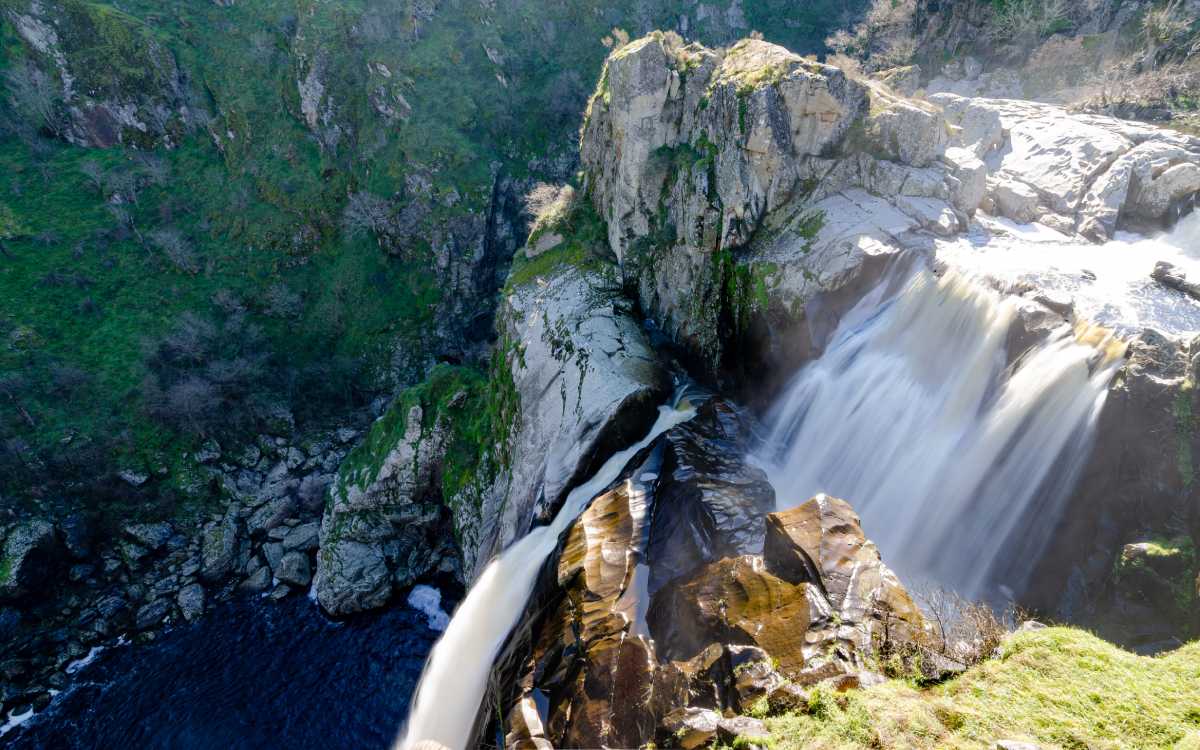
Aerial view of the ‘Spanish Niagara Falls’. | Shutterstock
The most popular route starts at Mansueco and is known as Senda de Roblea. This route is 2 and a half kilometres long and leads to some wooden walkways fixed on the rocks that allow you to see the waterfall from above. There are viewpoints as well where you can see Pozo de los Humos from an idyllic perspective.
This path is also known as Senda de Unamuno, and we must note that the popular author wrote down how astonished he felt by this place. A text that dates back to 1898, published in the magazine Ecos Literarios and signed by Miguel de Unamuno, reads: “¡Enorme fuerza la que, sin aparato alguno, con la sencillez del coloso, despliega! … Es una de las más hermosas caídas de agua que pueden verse entre aquellos tajos adustos.”
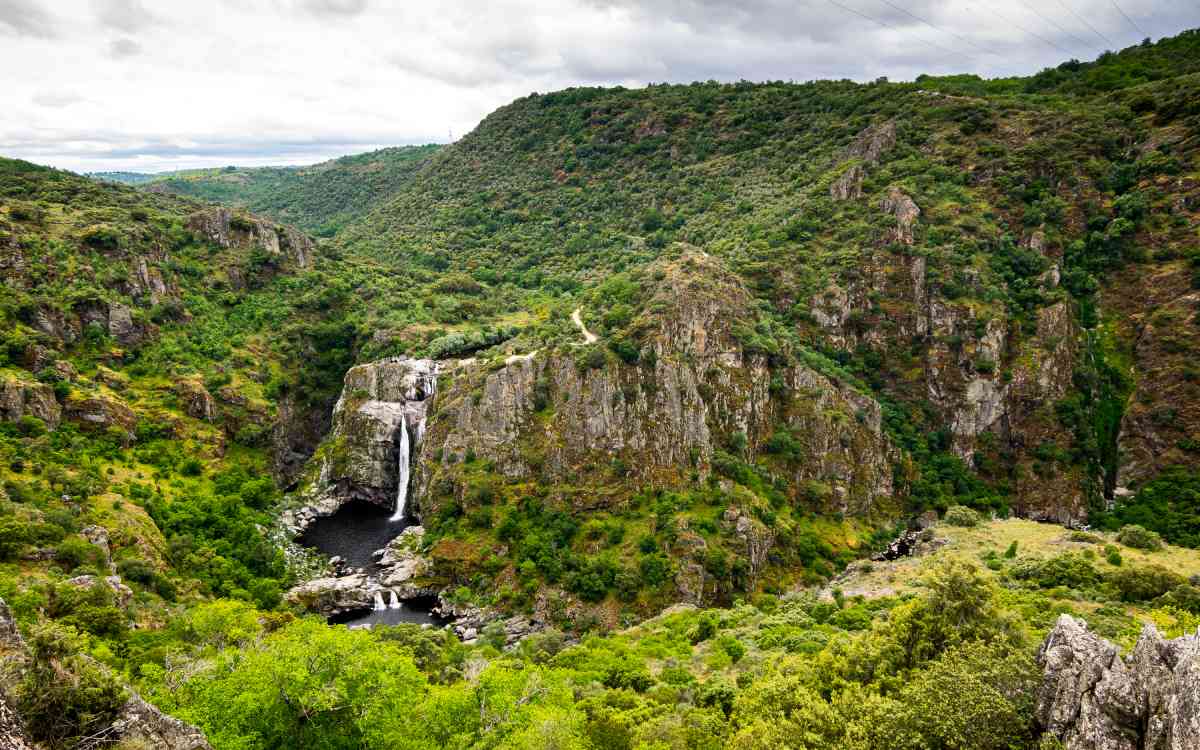
The waterfall and its surrounding area. | Shutterstock
The route that begins in Pereña de la Ribera is another great option to observe this natural wonder, a short route that leads to the opposite point. Pereña is the starting point, and it leads to a parking lot located a couple of kilometres from the waterfall. You can complete it by foot, but people usually reach this point by car.
On your way, you will find a few viewpoints that offer a panoramic view of the waterfall and its surrounding area. Although the cascade is further away on this route, the view is more complete.
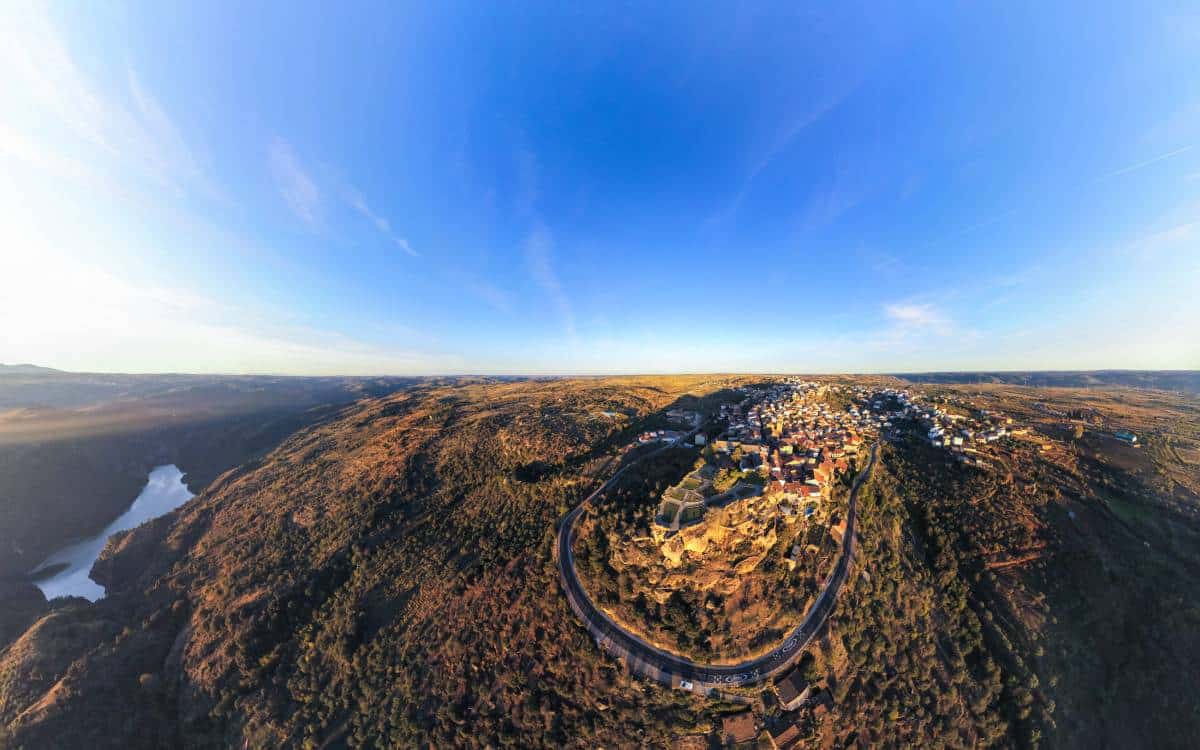
Aerial view of Fermoselle. | Shutterstock
Besides visiting the villages of Mansueco and Pereña de la Ribera, we recommend wandering around Fermoselle, a village in Zamora that charms with its lovely streets. Its various viewpoints are mandatory stops, since you can enjoy fascinating views of the scenery from them.
Fermoselle is also known as ‘the town of the 1000 wine cellars.’ This is actually one of the main reasons for its popularity. Fermoselle shelters plenty of subterranean wine cellars built thousands of years ago to protect the wine from the inclement weather. Nowadays, it is possible to visit them, and every wine lover should do it.